MENU:
Impacts of invasive Phragmites
Non-native Phragmites can negatively impact the biodiversity and ecological functions of invaded habitats, impair the recreational use of wetlands and shorelines, decrease property values, and increase fire risk. This page covers a variety of ecological and societal impacts brought on by the spread of non-native Phragmites throughout the Great Lakes region.
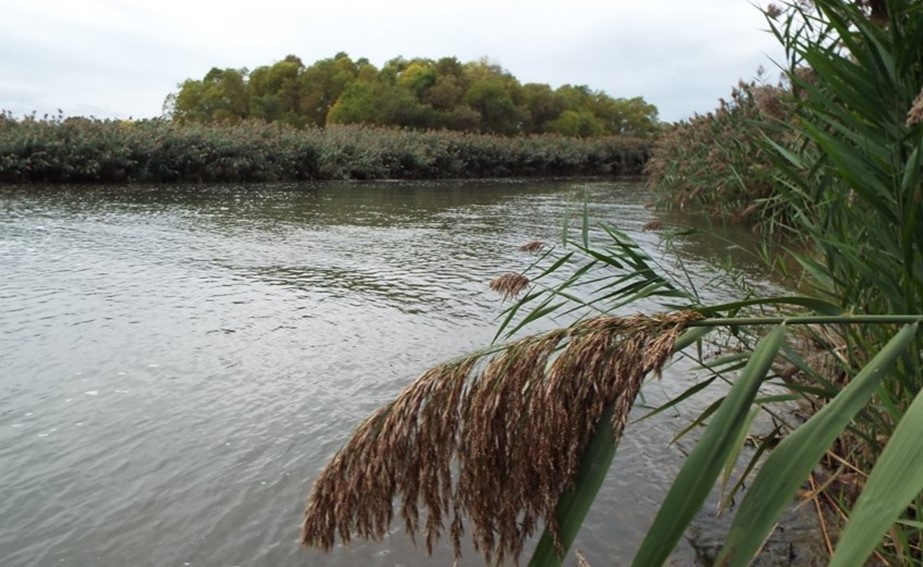
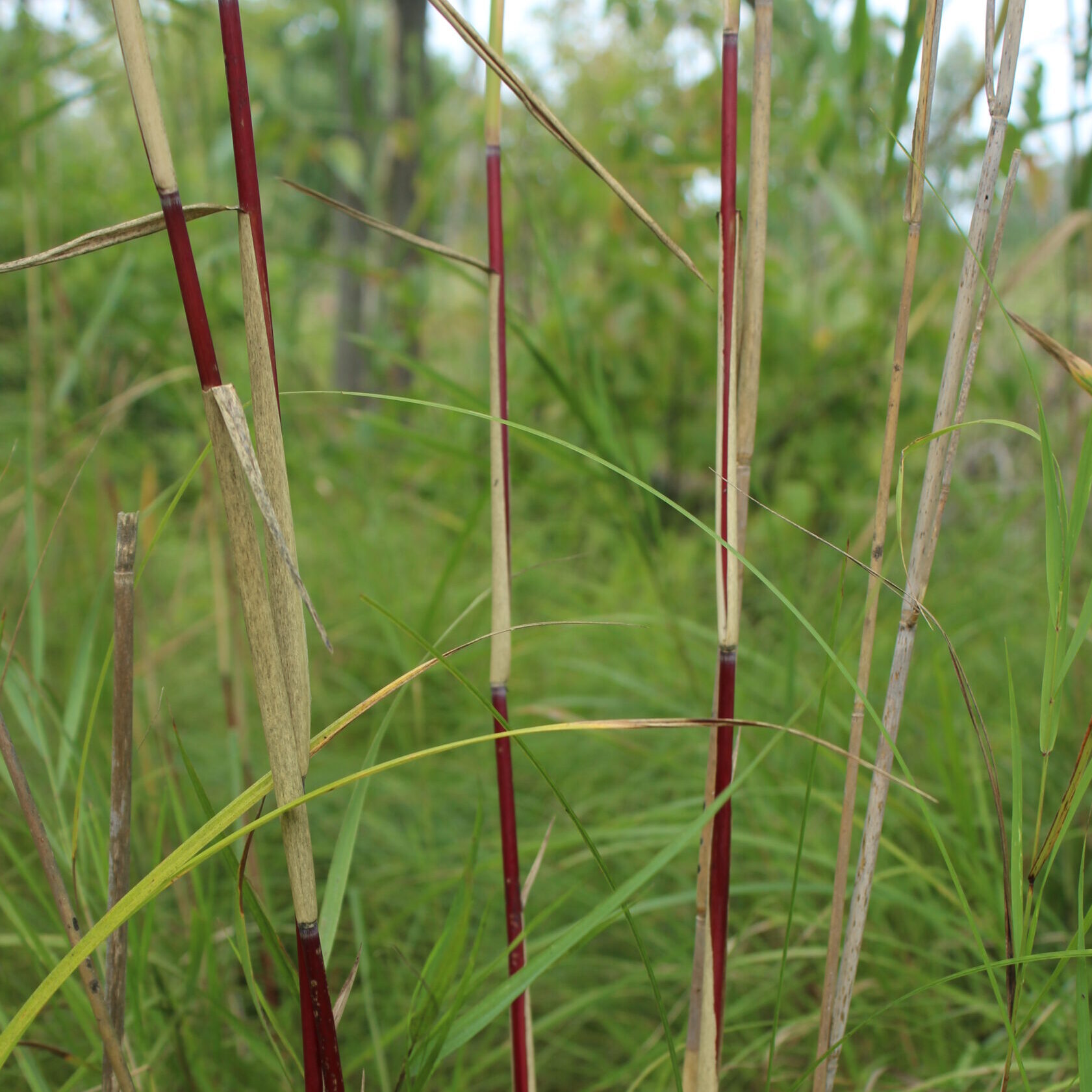
Native Phragmites
Native Phragmites has been present in North America for over 3,000 years. However, non-native Phragmites is now more widespread, particularly in disturbed environments such as roadsides and drainage ditches (visit the pages Native vs. invasive? and Where is it found?). Cooccurrence of native and non-native Phragmites further increases the complexity of management programs as managers need to develop control strategies that will successfully reduce non-native Phragmites populations without affecting the native species.
Inferences made from historical herbarium data suggested that some populations of native Phragmites could have been displaced by the more aggressive invasive strain, although this has never been directly observed in the wild (Saltonstall, 2001). Studies hypothesized that non-native Phragmites tends to have a competitive advantage over the native strain, as it produces more biomass, forms denser colonies, and shows a broader tolerance to environmental stressors (See our blog post What makes the non-native lineage of Phragmites so successful compared to the native lineage?). Further, recently published studies demonstrated that the invasive strain produces more seeds and has a greater dispersal capacity, enabling it to spread more rapidly through the environment.
It was long thought that the two strains of Phragmites could not hybridize as they bloom and senesce at different times. However, researchers from the University of Rhode Island were able to produce viable hybrid seedlings by cross-pollinating non-native and native Phragmites in the lab. Hybrids have been confirmed in both Seneca Falls, New York (Saltonstall et al., 2014) and in Las Vegas, Nevada (Saltonstall et al., 2016), but hybridization is still believed to be uncommon. Potential large-scale hybridization of the two subspecies nevertheless remains a concern, as this could lead to a genetic pollution of the native strain, or the creation of an aggressive hybrid.
Additional Resources:
- Meyerson, Lambertini, McCormick, and Whigham. 2012. Hybridization of common reed in North America? The answer is blowing in the wind. AoB Plants.
- Pyšek, Čuda, Šmilauer, Skálová, Chumová, Lambertini, Lučanová, Ryšavá, Trávníček, Šemberová, and Meyerson. 2020. Competition among native and invasive Phragmites australis populations: An experimental test of the effects of invasion status, genome size, and ploidy level. Ecology and Evolution.
- Saltonstall, Burdick, Miller, and Smith. 2005. Native and non-native Phragmites: Challenges in identification, research, and management of the common reed. National Estuarine Research Reserve Technical Report Series.
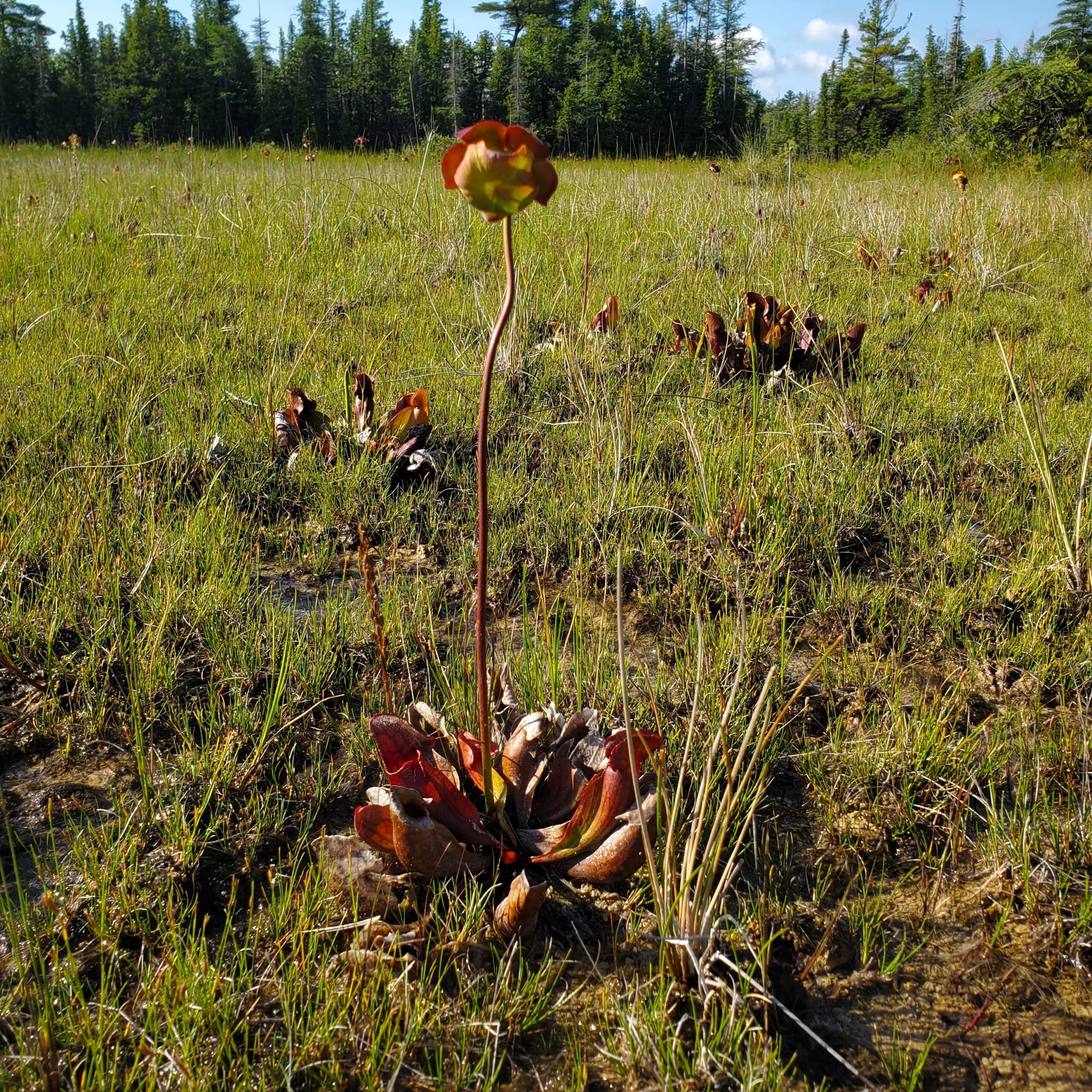
Flora
Non-native Phragmites produce large quantities of seeds (500-2,000 seeds per stem) and can expand rapidly via vegetative growth (growth of leaves, stems and roots), which enables it to quickly colonize new habitats and dominate areas in which it is established (see the How does it spread? page for more details on its reproduction mechanisms). As with many other invasive species, Phragmites can flourish in a wide range of environmental conditions, such as pH, salinity, or soil type. Several studies have demonstrated that Phragmites can quickly become the dominant species in a variety of wet habitats, and that the introduction of non-native Phragmites generally leads to a decrease in biomass, richness, and abundance of native plant species (Price et al., 2013, Raichel et al., 2003, Tulbure et al., 2007). A literature review conducted in 2019 evaluated the impacts non-native Phragmites had on native plant abundance and composition. Of the papers reviewed, 50% showed impacts to native plant abundance, while 54.5% showed impacts to plant composition (Rose, 2019).
Non-native Phragmites has many traits that allow it to persist and thrive in a broad variety of ecosystems. Mechanisms such as early emergence, allelopathy, and litter accumulation facilitate the rapid spread of Phragmites. Emerging earlier in the season than many native plants, Phragmites can exploit the pool of the soil’s nutritional resources and shade out its competitors. Phragmites has also been shown to be allelopathic, producing toxic chemicals in its root system that deters the growth of other species (Uddin et al., 2017). Phragmites also grows quickly and produces large amounts of above- and belowground biomass that decompose slowly. The immense standing litter (piles of dead stems and leaves) produced from the plant’s aboveground biomass can reduce light and temperature of the soil’s surface, inhibiting germination of native seeds.
Additional Resources
- Angelini and Bertness. 2011. Litter legacy increases the competitive advantage of invasive Phragmites australis in New England wetlands. Biological Invasions.
- Price, Fant, and Larkin. 2013. Ecology of native vs. introduced Phragmites australis (common reed) in Chicago-area wetlands. Wetlands.

Fauna
Impacts of non-native Phragmites on animals are less clear and vary between taxa. Phragmites’ stems and leaves have poor nutritional value and few organisms feed on the plant in North America (although some insect species do eat non-native Phragmites, see our blog post Who is bugging Phragmites? The insect herbivores of Common Reed). Replacement of native vegetation by the less nutritious non-native Phragmites could have negative consequences for herbivores. And, while Phragmites colonies may provide habitat for certain species (e.g., muskrats, red winged black birds, and common yellowthroats and yellow warblers), there are many other species that are negatively impacted by loss of other habitat types.
Bird surveys conducted in Connecticut tidal wetlands revealed that Phragmites-dominated marshes were characterized by a lower diversity of birds than adjacent mixed marshes (Schaumburg et al., 2011). Similarly, a survey of birds along the north shore of Lake Erie found that bird abundance was lower in Phragmites-dominated marshes compared to cattail-dominated marshes and meadow marshes. The study also found that ground-nesting birds that forage by stalking or grazing at the water’s surface, are most affected by invasion of Phragmites (Robichaud & Rooney, 2017). Meanwhile, a study conducted in freshwater wetlands of Québec showed little difference between Phragmites-dominated marshes and other plant communities in terms of bird abundance and diversity.(Lupien et al., 2014).
Fish at their larval and juvenile stages seem to be the most affected by Phragmites. Phragmites produces abundant litter which can reduce the mobility of juvenile fish in creeks. The effect on mature fish varies among species. Spotfin killifish, mummichog, and northern pike were all shown to be less abundant within Phragmites communities (Able et al., 2003, Larochelle et al., 2014). A 2018 study found a significantly different assemblage of fish at a Phragmites-infested wetland in comparison to a Phragmites-free wetland. The Phragmites-free wetlands had notably higher abundances of mosquitofish and bluegill (Krzton-Presson et al., 2018). A literature review conducted in 2019 evaluated the impacts non-native Phragmites had on native fish abundance and composition. They found that 54.5% of previously conducted studies saw that Phragmites reduced native fish abundance (Rose, 2019). Additionally, changes to the marsh food web were documented in 45.4% of papers.
The invasion of non-native Phragmites can also affect turtle species. A 2018 study found that both turtle distribution and size were affected by the presence of non-native Phragmites. Large turtles (red-eared sliders and common snapping turtles) were documented more often at Phragmites-free wetlands, indicating that invaded wetlands might not be a suitable habitat for some species (Krzton-Presson et al., 2018). Since turtles need to lay their eggs on land, the density of non-native Phragmites can often prevent the animals from freely moving through the habitat. Although a 2021 study that tracked turtle movement found that stands of invasive Phragmites did not restrict the movement of Blanding’s or spotted turtles (Angoh et al., 2021). A 2010 study looking at the reproductive success of spiny softshell turtles found Phragmites growth shaded nests, resulting in lower incubation temperatures which can have a negative impact on hatching success (Bolton & Brooks, 2010).
Currently, little is known about potential impacts of Phragmites on amphibians. Preliminary results of research conducted in freshwater marshes of Québec showed no significant impacts on northern leopard frogs, green frogs, and spring peepers (Mazerolle et al., 2014), while a field experiment conducted in Connecticut found that larval American bullfrogs were positively affected by non-native Phragmites (Rogalski and Skelly, 2012). A lab experiment found that Phragmites reed density did not affect wood frog tadpole development rates, but high reed density was related to slower tadpole development (Perez et al., 2013) However, recent studies suggest that some terrestrial salamanders may be impacted by Phragmites-invaded habitats (Lehtinen et al., 2022).
It is likely that non-native Phragmites impacts smaller fauna too. A 2021 survey conducted by Trout Unlimited Canada found that areas with low or no Phragmites had more aquatic macroinvertebrate (mayfly larvae, dragonfly larvae, midges, etc.) per sample, as well as more different types of organisms, compared to samples collected where Phragmites had medium or high density (Borowski and Huynh, 2022).
Additional Resources:
- Warren, Fell, Grimsby, Buck, Rilling, and Fertik. 2001. Rates, patterns, and impacts of Phragmites australis expansion and effects of experimental Phragmites control on vegetation, macroinvertebrates, and fish within tidelands of the lower Connecticut River. Estuaries.
- Robichaud and Rooney. 2017. Long-term effects of a Phragmites australis invasion on birds in a Lake Erie coastal marsh. Journal of Great Lakes Research.
- Kessler, Merchant, Allen, and Shultz. 2011. Impacts of invasive plants on Sandhill Crane (Grus canadensis) roosting habitat. Invasive Plant Society and Management.
- Rose. 2019. A review of the ecological effects of European Common Reed (Phragmites australis) on fishes and fish habitat in North America. Journal of Student Science and Technology.
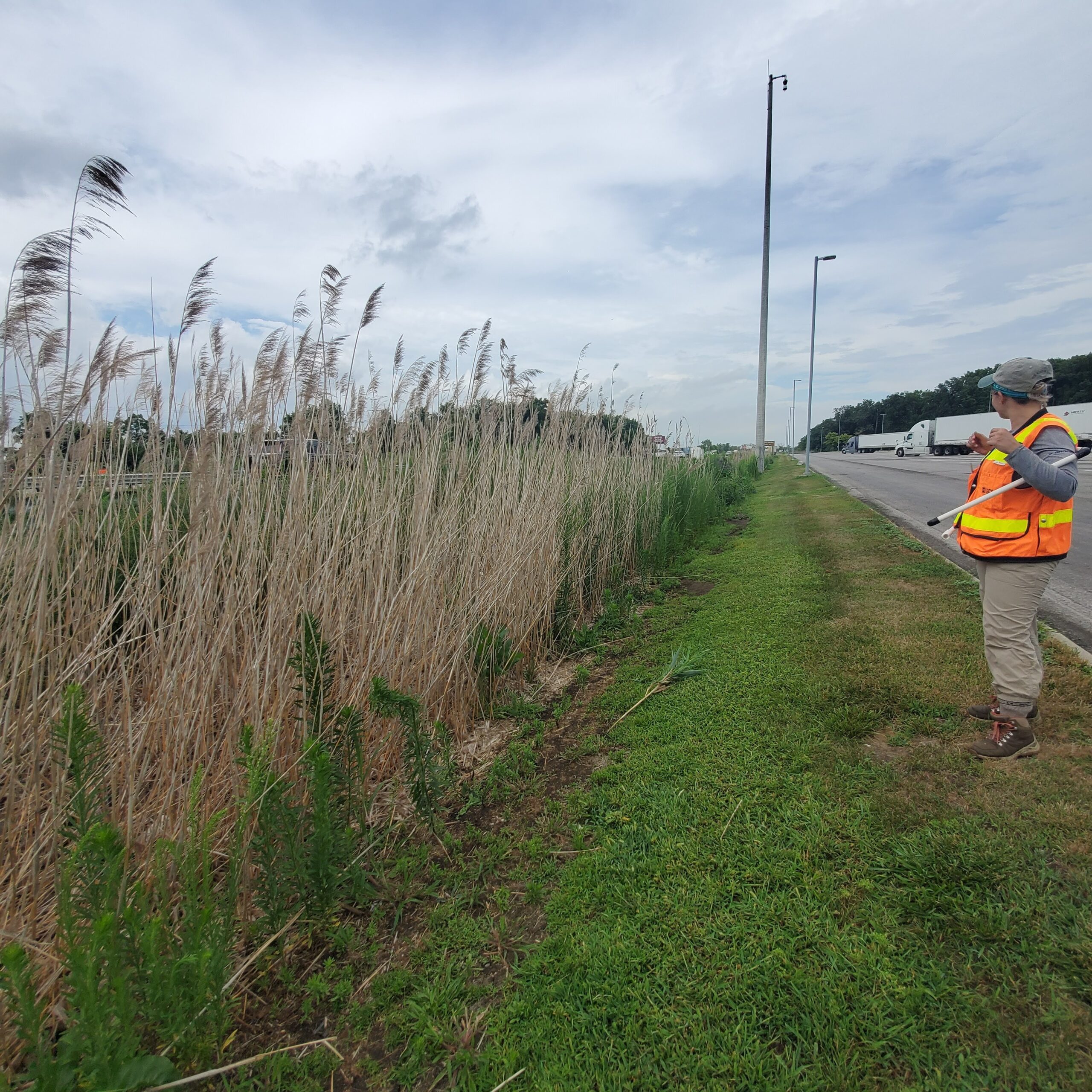
Ecosystem Services
Phragmites is an ecosystem engineer: a species that can successfully modify the form and function of the habitats in which it is found. For example, the rapid growth and slow decomposition of above-ground biomass leads to large accumulations of organic material over several growing seasons. This can lead to greater rates of sediment deposition which can increase the elevation of invaded marshes and affect drainage, leading invaded marshes to slowly become drier, in turn, causing further changes in the remnant plant populations at a site (Rooth et al., 2003). Another consequence is that invasive Phragmites can dry out an area due to its high water demands and elevated evapotranspiration rates (Herbst & Kappan, 1999). For some areas of the country, like those experiencing land loss and erosion due to climate change, Phragmites’ high accretion rates and their ability to trap mineral and organic sediments by their extensive litter layer is welcomed. For others, this process drastically alters valued hunting or fishing grounds and can block important drainage structures resulting in problems with flooding.
While the species harms native wetlands, the plants are very effective at taking up nutrients (one reason they are an incredibly competitive species). Non-native Phragmites can lock up elements in their stalks and roots, which is a good thing for areas with industrial legacy pollutants like cadmium, mercury, zinc, and lead. Due to the plant’s heavy metal accumulation, it can be used as a form of biomonitoring or in bioremediation projects (Bonanno & Lo Giudice, 2010, Windham et al., 2003)
Additional Resources
- “Why Should I Care About Invasive Plants?” A fact sheet by the Midwest Invasive Plant Network
- GLPC webinar “Ecological effects of invasive Phragmites in a Lake Erie coastal marsh” by Courtney Robichaud
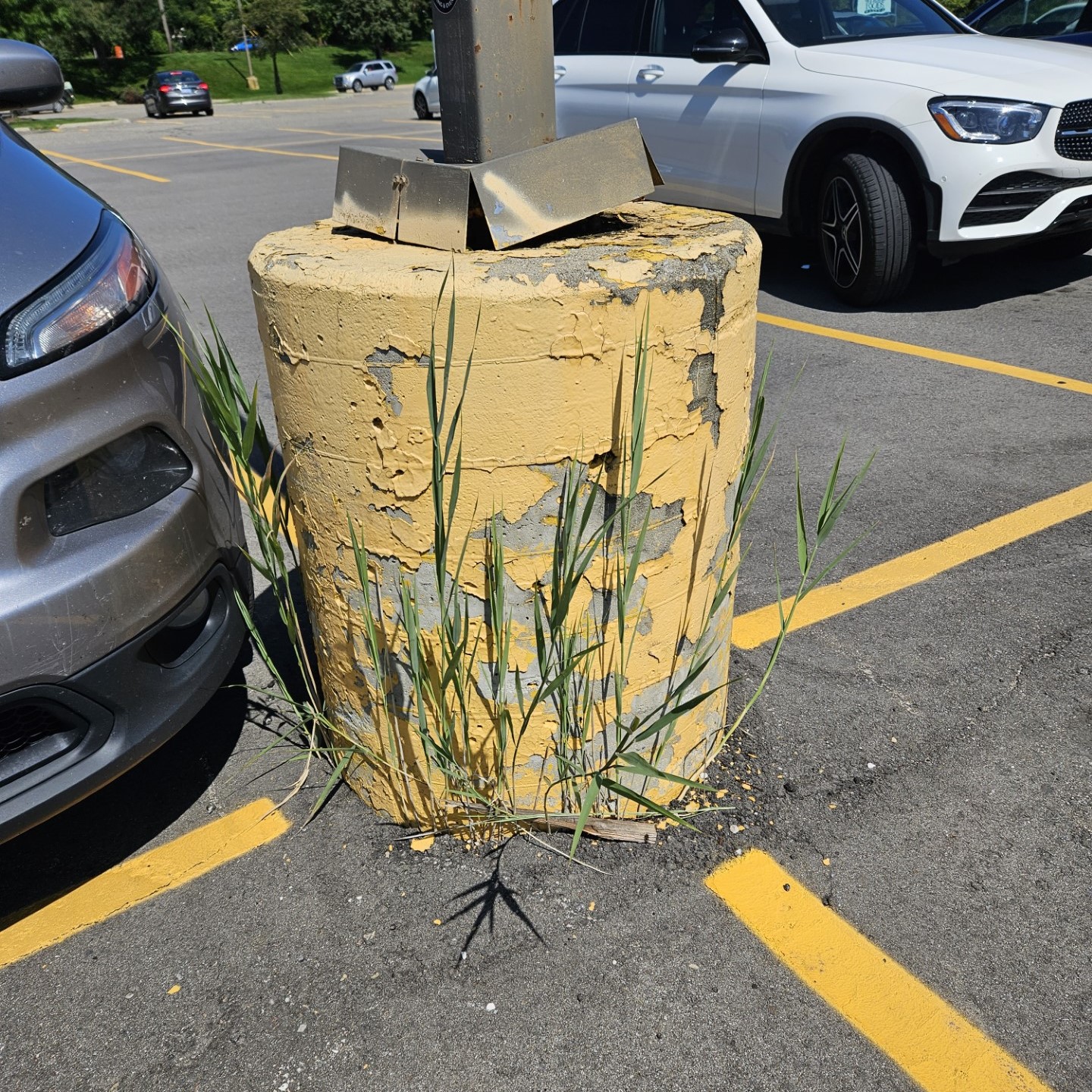
Societal Impacts
Non-native Phragmites, especially when it invades urban environments, can pose a variety of safety hazards. As described in the previous sections, Phragmites grow large amounts of aboveground biomass and create a lot of litter. When this dried biomass accumulates, it can turn into quite a fire hazard and many large fires have been exacerbated by the presence of non-native Phragmites. Stands of non-native Phragmites can be found virtually anywhere—next to houses, up against roads, in parking lots—making them a human safety concern should they catch fire. Recently, Staten Island, New York even initiated a program that encourages homeowners to cut back Phragmites on their property to reduce wildfire risk.
Because the invasive plant can grow so tall (up to 20 feet), Phragmites presents a real concern for road safety. At their full height, drivers may have trouble seeing around patches of the plant and they can often block important road signage. This poses as a burden to transportation and municipality, as Phragmites are often treated yearly (by either mowing or herbicide) to keep road site lines clear, and the costs can add up! The Green Shovels Collaborative calculated that the cost to manage Phragmites along the roadside is approximately $936/ha ($1,200 CAD/ha) along highways and $3,120/ha ($4,000/ha CAD) along rural roads.
Non-native Phragmites can also impact some of our favorite places. Many recreational spots, whether they are used for fishing, kayaking, birdwatching, hunting, or are valued simply for their aesthetics can be negatively impacted by non-native Phragmites growth. Additionally, reduced recreational capacity can impact the economic revenue of a local area. A cost analysis for the province of Ontario, Canada found the total estimated annual economic impact across all recreational activities due to Phragmites would be a loss of $42.7 million CAD ($31.9 million USD) annually. A case study by the Illinois Department of Transportation noted that necessary roadside equipment to manage Phragmites, like a remote control tractor slope mower, called a Green Climber, can cost $150,000 USD for one unit (U.S Department of Transportation, 2021).
Non-native Phragmites can also have a drastic impact on property values. Due to their tall height and dense formation, Phragmites can block waterfront views and make beaches unusable. A 2017 study of the effects of Phragmites on Michigan property value found that for every one meter increase in distance from non-native Phragmites, property sale price increased by $3.90 USD (Iseley et al., 2017).
Additional Resources
- Socio-economic impacts of Phragmites fact sheet by the Invasive Species Centre
- Preliminary cost-benefit analysis for prevention, treatment and control of Phragmites in Ontario by the Green Shovels Collaborative
- Invasive species impacts on transportation infrastructure by the U.S. Department of Transportation
